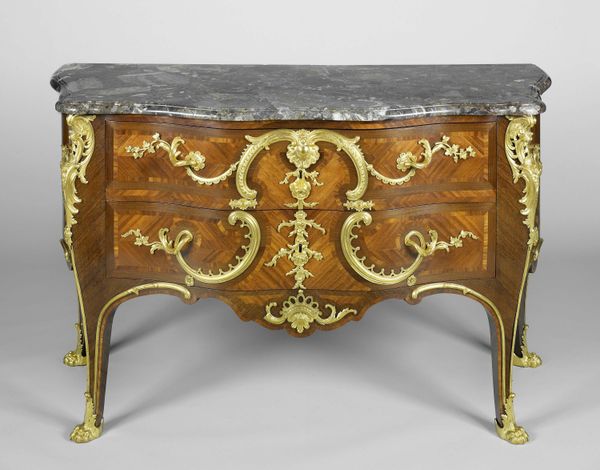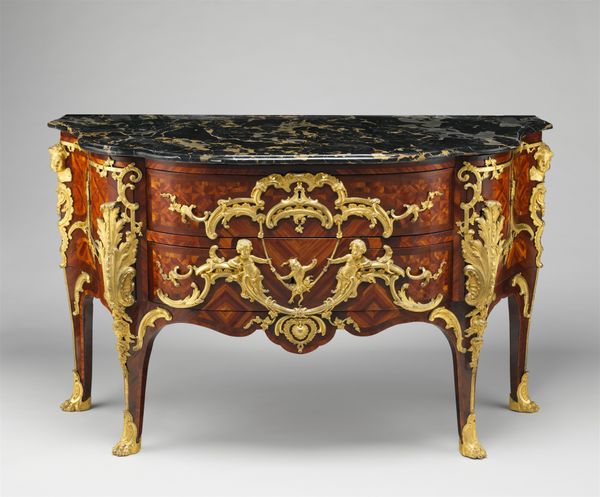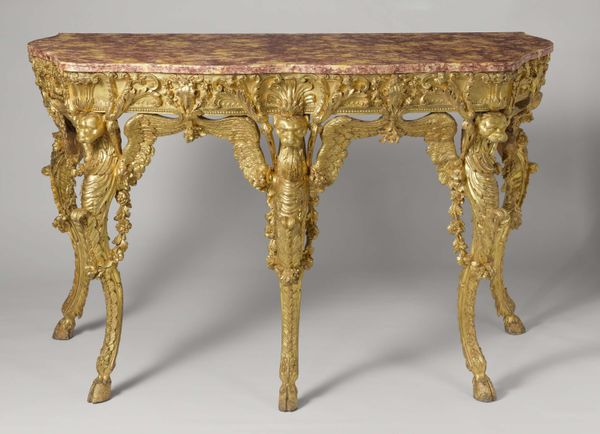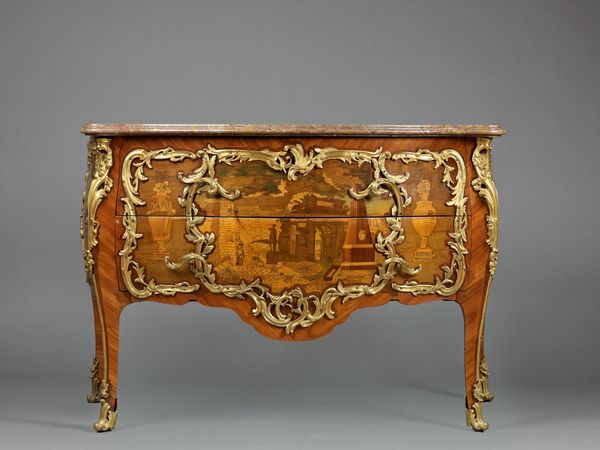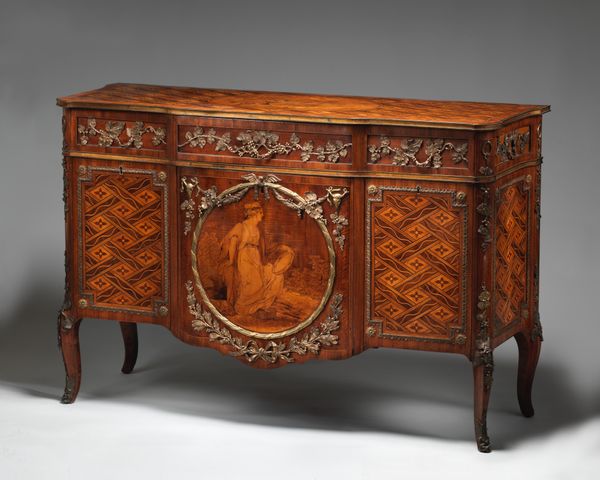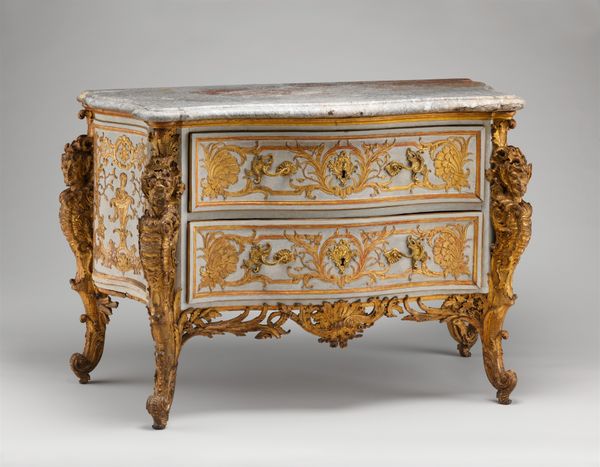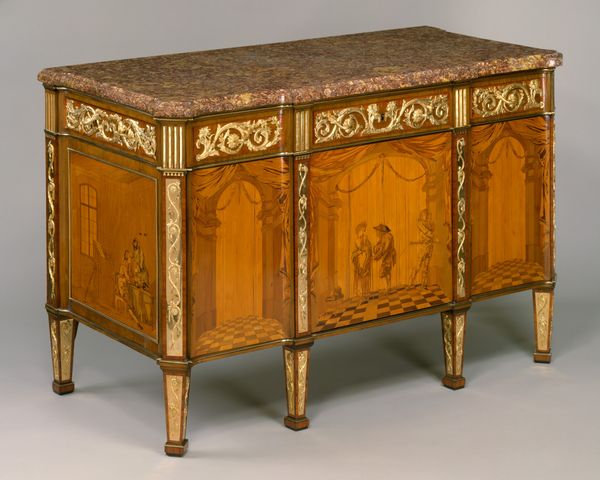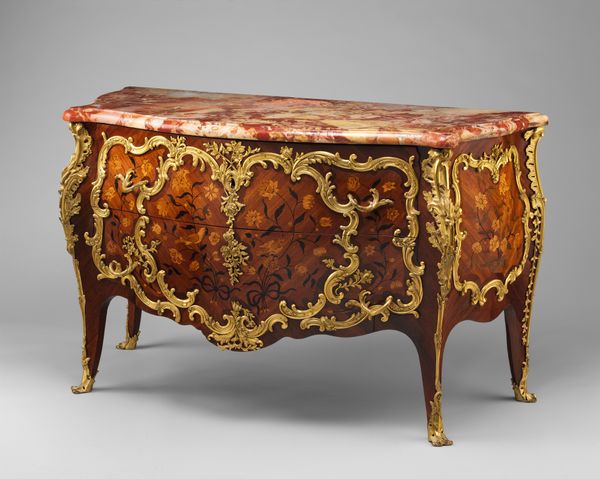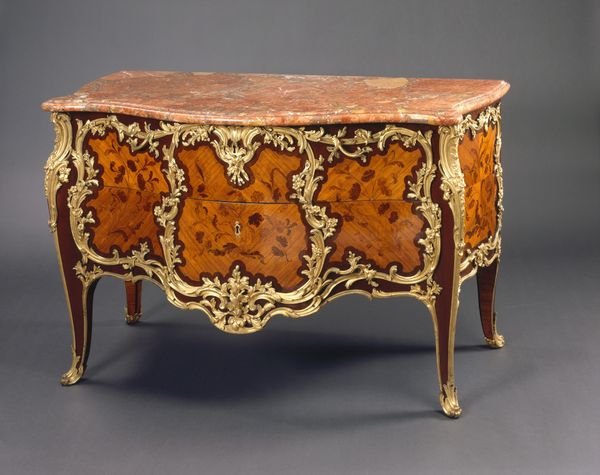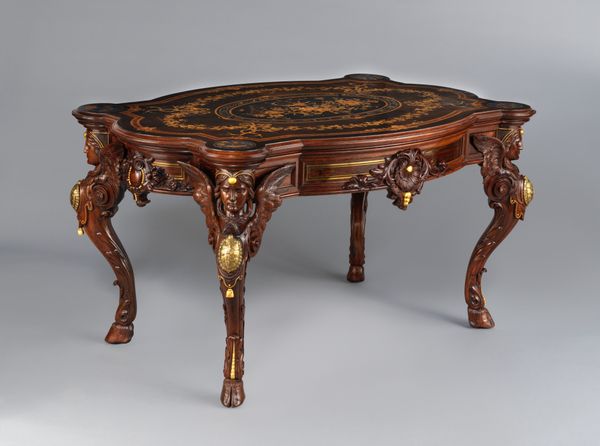
carving, guilding, bronze, wood, marble
#
carving
#
furniture
#
guilding
#
bronze
#
france
#
wood
#
decorative-art
#
marble
#
rococo
Dimensions: 35 3/4 x 57 x 26 1/4 in. (90.81 x 144.78 x 66.68 cm)
Copyright: Public Domain
Curator: The "Commode," dating back to about 1745 and attributed to Charles Cressent, presents a fascinating example of Rococo design. Editor: It's quite flamboyant, isn't it? The heavy gilding and that swirling marble top make it seem almost to teeter on those delicate legs. Curator: Rococo was all about that kind of exuberant display. Consider the historical context—this commode wasn't just furniture, it was a symbol of wealth and status within the French aristocracy. It reflects the court's elaborate rituals and pursuit of pleasure. Editor: Yes, but look closer at how Cressent manipulates form. The interplay between the marquetry on the drawers and the applied bronze ornament creates a lively surface texture. The eye is constantly in motion, guided by the flowing lines and the contrast of materials. Curator: The commode also reveals insights into guild systems. Cressent, defying conventions, combined ebeniste and fondeur work; bronze casting and furniture making, pushing the boundaries. It underscores conflicts between individual artistry and institutional control of craft production in that era. Editor: The asymmetrical arrangement of the bronze work, though seemingly chaotic, actually directs our focus and unifies the design. See how those naturalistic floral patterns echo the curves in the marble, pulling all the elements into conversation? Curator: It is undeniably opulent, showcasing how power consolidated around individuals in pre-revolutionary France. Displaying objects such as this reinforces social divisions in ways impossible today. Editor: It really does showcase luxury, which comes through the intricate formal arrangement. Those delicate details really tie everything together.
